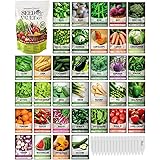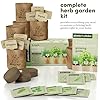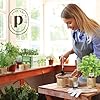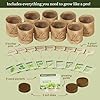Outsunny Galvanized Raised Garden Bed with Trellis, Metal Planter Box with Drainage Holes, Outdoor Privacy Screen for Climbing Plants, Vegetable, Vines, 35" x 16" x 70", Black
$184.99 (as of 14:06 GMT -05:00 - More infoProduct prices and availability are accurate as of the date/time indicated and are subject to change. Any price and availability information displayed on [relevant Amazon Site(s), as applicable] at the time of purchase will apply to the purchase of this product.)Lazzmonk 2 Pack Raised Garden Bed Planter Box with Trellis, 58”Tomato Planter with Trellis for Climbing Plants Vegetables Vine Flowers, Self-Watering Tomato Cage for Garden Patio Outdoor & Indoor
$37.99 (as of 14:19 GMT -05:00 - More infoProduct prices and availability are accurate as of the date/time indicated and are subject to change. Any price and availability information displayed on [relevant Amazon Site(s), as applicable] at the time of purchase will apply to the purchase of this product.)After the cold days of winter, the warmth that comes with springs causes people to shed their jackets and don gardening gloves. Nurseries are filled with avid gardeners ready to start the new planting season. This kind of excitement can cause people to start planting flowers and seeds before they have prepared their soil. The first step to ensure healthy plants is to create the best environment for them to take root. After preparing the soil, there are a few more steps on your planting “to do” list to give your flowering plants the best chance at growing and thriving, and the best chance for your seeds to germinate.
Correct planting is essential to help get your seeds bulbs and other plants growing. It is a good idea to place the plants on top of the ground first when planting new gardens or filling in gaps. This way you can see whether the plants fit into the area and with the other surrounding greenery and plants. This gives you a chance to change your mind and saves a lot of extra work!
Always make sure to check the labels for plant size and dimensions to ensure you have chosen a suitable spot. Visualize the plant at its size when fully grown, to determine whether it may obstruct other plants or create too much shade, which can restrict growth.
As a rule, you should dig a hole twice the width of the plant and slightly deeper than the length of the pot. After turning the plant upside down, gently tap it out of the pot. Place the planting in the center of the hole. Pack the hole with a good mix of compost or backfill it with soil. Water it well.
A long soaking of water is more beneficial to a new planting than a light watering, since a soak encourages the plant’s root system to find cooler temperatures in the ground water. A light sprinkling tends to cause the roots to stay on the surface of the soil. There are many excellent sprinklers on the market that help restrict the water to certain areas. In cooler months, water doesn’t evaporate as quickly, and you may find your garden does not require watering as often.
Weeds are probably one of a gardeners most disliked plants. Weeding is tedious and annoying, but remember that a small weed problem is likely to be twice as big a problem the following week, and therefore twice as much work. By keep your new planting beds well weeded, it will not only look better but your plants won’t be competing for food and water. Weeds tend to harbor many unwanted pests too, so if you use weed control chemicals, then ensure that they do not come in contact with your plants.













































